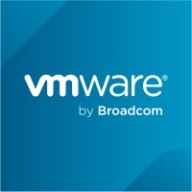

CloudSphere and VMware Aria Automation are products that rival each other in cloud management and automation. CloudSphere leads in flexibility and pricing, making it preferred for cost-effective implementations, while VMware Aria Automation excels with its comprehensive feature set, delivering advanced capabilities advantageous for complex automation requirements.
Features: CloudSphere delivers cloud asset management, cost optimization, and governance, ideal for financial management. VMware Aria Automation offers extensive automation functionalities and seamless integration with VMware ecosystems, catering to organizations with intricate automation needs.
Room for Improvement: CloudSphere could refine certain areas like integration with third-party tools, enhancing analytics and reporting capabilities. VMware Aria Automation may improve deployment simplicity, optimize pricing for smaller businesses, and expand cross-platform compatibility to allow more diverse environments.
Ease of Deployment and Customer Service: CloudSphere is noted for its simple deployment model and adaptable support services. VMware Aria Automation provides a well-suited deployment for existing VMware infrastructures but involves a more comprehensive setup process. CloudSphere offers customizable support, while VMware focuses on specialized support for its suite.
Pricing and ROI: CloudSphere presents competitive pricing with a favorable ROI due to efficient management features. VMware Aria Automation requires a higher upfront investment, justified by its automation capabilities and VMware integration, delivering a substantial ROI for businesses utilizing these advanced features.
| Product | Market Share (%) |
|---|---|
| VMware Aria Automation | 9.4% |
| CloudSphere | 1.0% |
| Other | 89.6% |


| Company Size | Count |
|---|---|
| Small Business | 32 |
| Midsize Enterprise | 24 |
| Large Enterprise | 130 |
CloudSphere is an intelligent cloud management platform that enables organizations to plan, optimize, secure, and scale their cloud adoption. The platform has three solutions to help organizations manage dynamic, multi-cloud environments, including cloud migration planning, cloud cost management, and cloud security posture management. By using application intelligence (AI), the platform is able to discover and collect all of the data points that collectively define an application across on-premises, hybrid, and cloud environments. Because the solution is very scalable, it can accommodate companies of all sizes.
The CloudSphere solution is ideal for:
CloudSphere Product Highlights
CloudSphere Features
CloudSphere has many valuable key features. Some of the most useful ones include:
CloudSphere Benefits
There are many benefits to implementing CloudSphere. Some of the biggest advantages the solution offers include:
VMware Aria Automation is a cloud management tool that allows companies to simplify their cloud experience through a modern automation platform. The solution is designed to deliver self-service clouds, multi-cloud automation with governance, and DevOps-based security and infrastructure management. It helps organizations improve IT agility, efficiency, and productivity through its various features.
VMware Aria Automation has multiple use cases that include the following:
VMware Aria Automation Features
VMware Aria Automation has various features that allow users to easily perform operations. Some of the solution's capacities include:
VMware Aria Automation Benefits
VMware Aria Automation offers its users various benefits. Some of the biggest advantages that the solution brings to companies that utilize it include:
Reviews from Real Users
Awais J., CTO/CEO at a tech services company, likes VMware Aria Automation because it saves a lot of time, provides more visibility, and has extensive automation capabilities.
An IT consultant at a government rates VMware Aria Automation highly because the product gives you flexibility to analyze and consume resources.
We monitor all Cloud Management reviews to prevent fraudulent reviews and keep review quality high. We do not post reviews by company employees or direct competitors. We validate each review for authenticity via cross-reference with LinkedIn, and personal follow-up with the reviewer when necessary.